#disruptivedesignma
Text
“...it is important to make sure that the emotive responses and drivers are backed up with statistics and sound research!”
- a thought whilst reading a scholarly article review about the book ‘Systems Thinking for Social Change’
0 notes
Text
Every Opportunity
(Tuesday 21st November)
What determines an individuals, groups or organisations altruistic values?

As altruism has evolved and the way we communicate developed, do social networks provide the best platform to practice these values?
If not, should our values or these platforms be disrupted?
As a professional designer, I often create brands and campaigns that engage with a target audience.
It has become a regular occurrence that a measure of success for my work,
is the number of likes that the brand or charity can achieve on social media.
It is within the domain of social networks that the majority of engagement is taking place for charities to appeal to their audience, but there are also many pitfalls that await them as they navigate ways to optimise a thumbs up, converting them into real tactile change.
To investigate my research proposal I will examine topics such as Empathy, Narcissism, Charity, Social and Cultural Constructs, Advancing Technology, Bureaucracy, and Disruption.


I have familiarised myself with work by Peter Singer, Michael Johnson,
Simon Baron-Cohen, Adam Greenfield and Adam Curtis, to find out what information they currently promote around the above topics.
My hope is that the research informs the how, why, where, and on what platform people choose to be altruistic, allowing me to guide and educate my clients better in the future.
During my presentation I am looking to not only engage the panel with my discussion, but I hope to create a level of self-reflection in the panel members towards their own values and efforts for the causes they might believe in.
0 notes
Text
Peter Liversidge - 1st Live Blog
I am writing this blog during the Peter Liversidge Exhibition Talk at PCA - 08/11/17
(This means that it will appear out of sync on the timeline of blogs, unless I can find another way to post this separately)
My expectations for this before it starts; after the Simon Morrisey (Curator) talk about the ‘We the People...’ exhibition, I am intrigued to see what it is that drives Peter not only for this work that he exhibited, but also in the other work that he has created.
Peter writes proposals for work on a typewriter - after graduating in 1996 computers were too expensive, so brought a Olivetti Lettera 35i - a portable aluminium bodied typewriter - sitting at his kitchen table writing proposals that then became the actual artwork.
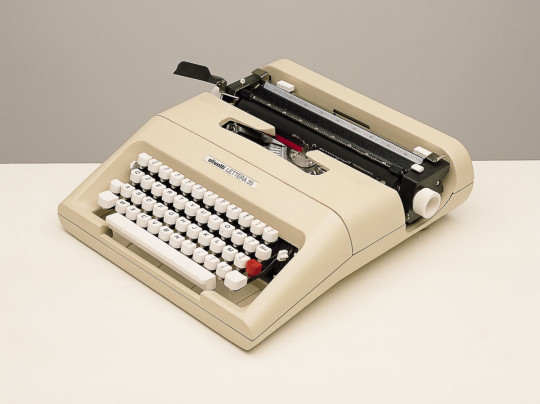
I love the idea of starting the process with something as tactile as a typewriter, the way the keys have a large depression, and the paper is left with a physical impression on the page along with the ink.
Proposals are eventually realised in different mediums later. The proposal is the work and isn't the work. Peter adds a lovely element to his work by trying to let it exist out of his control at as many stages as possible, from the people who frame his proposals, all the way to the way the audience engages in the work, takes it home or letting the conversations surrounding his work take place somewhere he never gets to hear them. This also allows the work to exist outside the gallery space it occupies as well.
All projects are published in an order as per the book that is created - for example - Proposal 15 “I propose we should all walk together.” - Thats it. This book determines the order they are also hung, the frame maker determines the pieces that are given coloured glass and it doesn't need to make sense.
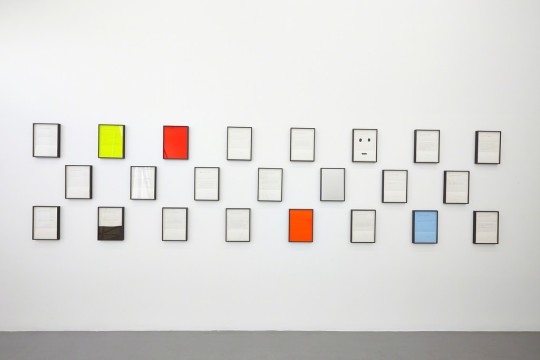
The work is how you read them, but sometimes they are very specific, for example, the Kate Mcgarry, Neon Face, 2017. Neon face is the least amount of effort to make a signifier, smiley face.

Costa Coffee cup holder, titled ‘mask’ 2013, Black Bronze.
Its clearly not an african mask, but the black bronze finish is natural to Byzantine, coloured by being under the ground for hundreds of years. This cup holder is fake in all its representations as a mask. But yet looks like a mask.
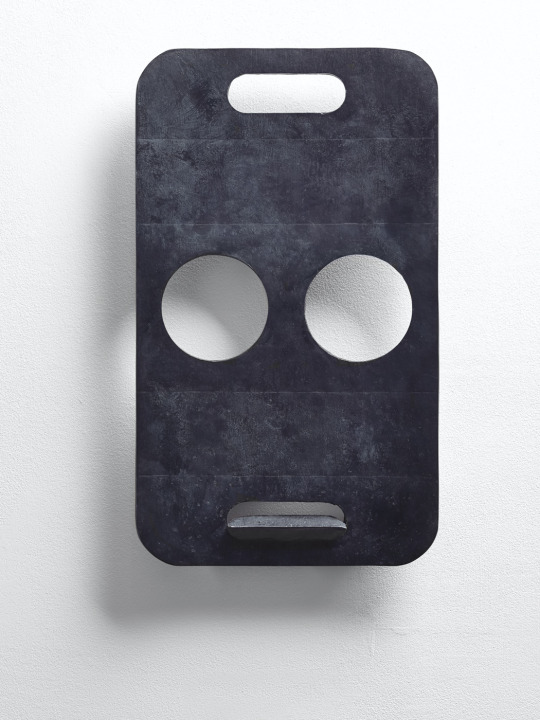
When at the Edinburgh Festival witnessed a lot of empty flag poles, liked the idea of placing something as menial as a ‘Hello’ on a flag, and it tells you nothing more, assumptions made and a feeling of secrecy ensues.
‘At this point and no other’ we are just seeing a photograph of the work, it is placed in Connecticut so we are not experiencing it, originated there and now in New York,
The importance of Context: with all of Peters work he drives down to the details of not only how he will create the work, but forming the idea is often the start of the experience for the audience as well. Where the work ends up is important, and this is shown with his sticker exhibition ‘Will History Be Kind, 2009′ - stickers that were printed and placed around Miami, New York and Kabul, Afghanistan.
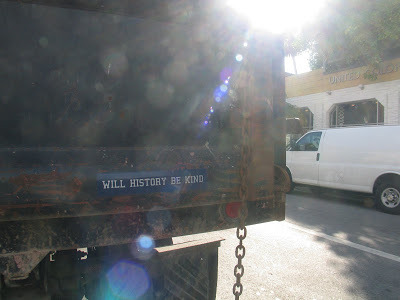
“History will be kind for I intend to write it” - heard this quote from Winston Churchill and felt that it was arrogant and so created the sticker ‘Will History Be Kind’ - its place in Miami takes on a different meaning to the placement in Kabul, Afghanistan.
Free Signs: when you drive past someones property and there is a sign that states ‘Free’ - the items with it are free, but Peter decided to take the sign instead, but then in doing so it meant that people who had stuff outside, could be prosecuted for fly tipping, so made signs to replace the ones he took.

Text based work: Hello Sign that turns on when walking into a room. Thats all it is.
One of my favourite pieces from this talk was ‘The rules for Iceland’ - took a book from the Senate when in Washington and it was a list of rules for how you should act when visiting. Took this idea of taking rules from other places and combining them into a set of rules for somewhere entirely unrelated for where they were intended, textualising them into another environment. First one is you have to shower to enter a swimming pool, turned into ‘you have to shower before entering Iceland.’ One band had a rule about always dressing as a monk, no sharp objects is another one. 4000 posters were created and distributed all over the island - part of the experience, but completely made up. How people engage with the rules is completely out of Peters control.
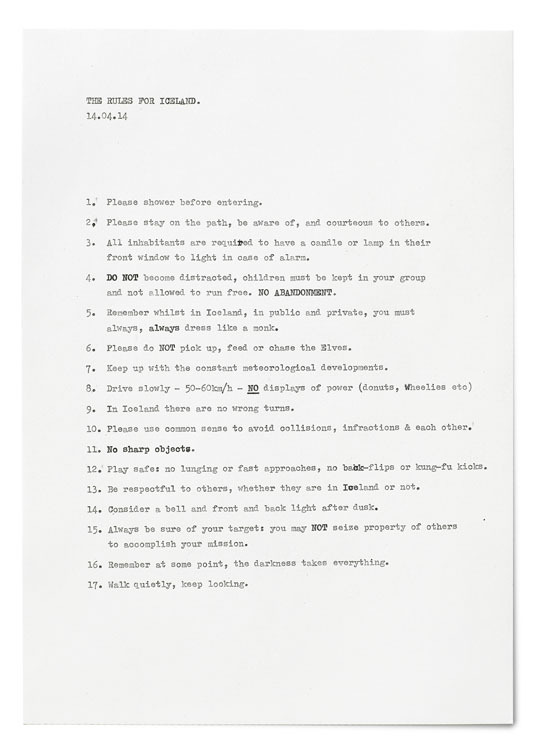
**realisation that I have been writing proposals in my notes for the last five years but never doing anything with them because I take them too literal.
Great story about fake snow in New York...creating fake snow for the opening night of a gallery, in the middle of summer, but had the unexpected outcome of news reporters, reporting on a crash down the road, wondering what this snow was that appeared in the middle of summer. Again, an unexpected twist that isn't intended, but can only happen if Peter creates work that is free to travel or be explored in any way.
Tang Museum in Saratoga - 2013: Blood bank setup by red cross where people just came in and gave blood. That was the exhibition. The people giving blood, participate in the work. More blood was given in 6 weeks than 6 months. This was just a way into the museum, but they got a copy of the proposal, which meant they received the work. I found that this resonated with me the most as I believe that it highlights how art can cross over from not only the artists idea to the audience being engaged, but can then go further by helping to address a need within society. Its a beautiful thought to have that someone has received blood that potentially saved there life, that was donated as part of an artists installation. For me this highlights that Art can perform multiple functions whilst still maintaining the original intention of being an experience of the artists creativity or artistic expression.
The Bridge: Opening of Turbine Hall, Tate Modern, 2016. 500 singers from 24 different choirs, all singing in unison, to test the acoustics. Met with the plasterers, electrician, curators, directors, staff canteen, met with everyone associated with the opening of the Tate. Even an elderly lady who had never visited before. Turbine Hall was formerly a power station. Lady who attended had a personal connection as husband had been an engineer at the power station and had died two years prior. The question raised was how does the work connect to the building, and vice versa. Had to test with singing into the wall - found out that there is a 7 second reverb from the wall in the main hall.

Nutmeg Essence: found out that there was a history of people carving nutmeg, I believe he said in Massachusetts, so added nutmeg essence to the water that the fire brigade used when putting out fires, so for a 6 week period there was a smell of nutmeg in the air anytime they were called upon.
Postal Carrier, The Aldrich, CT: Scherrell Miller, postal worker - Making the Postal lady the curator and part of the exhibition. Posted objects from London to the Aldrich and the lady at the local post office would receive it and then hand deliver it to the gallery and place onto the shelf, the control is then out of his hands. Had actually posted a piece of toast to his cousin as an 11 year old. Funny how this has come back around in his work. Scherell totally owned this in the end displaying the work completely differently to how Peter would have done it.

Anyone involved in Peters work is invited in advance. Interesting how this work becomes from the people, not professionals, and not about Peter or his ego.
Interesting that he took jobs when moving to London that he knew he didn't have to think in them, allowing him to work as an artist outside of it. This is what I have had to do by helping with carpentry. He had a sense of being an outsider as an artist - wondering is this good enough. The most important question is actually; why are you doing this?
He wants to be an outsider in his work and never wants to have a signature style, wanting to be as interested in his work as his audience will be. If others have to, he should too.
Plymouth work motivation:
1300 black sanitation workers - Glenn Ligon,
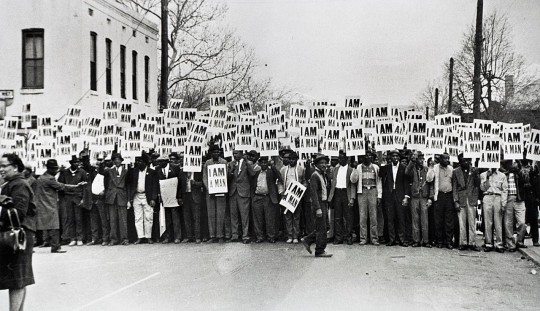
Completely different way of working for Peter - taking place in the old Council house - Civic Centre, in Plymouth as Part of Simon Morriseys ‘We the People’ Exhibition. Book that had 750 phrases, public come in and choose a phrase to go onto a sign, it gets painted and then turned into a protest board, members of the public are then allowed to take it away - the work is now the conversation that is exchanged from this point on. This is the part that Peter is not even aware of, as people talk to themselves, or the sign painters talk amongst themselves, or painters talk to the public. Altogether the phrases come from primary school children to elderly people. A lot of people went through the book looking for political statements. When considering what people chose you wonder where does it live now. Has a degree of separation from the work, he cannot worry whether people take a sign or not. Favourite sign is ‘I like proper art’ - so relevant as piece within this exhibition.

**Interesting moment when Peter passes his phone around in order for everyone to see a sign that was deleted. He gives out his passcode so people can see the photo.
I posed the question “does Peter think that there was a missed opportunity here to use this level of engagement to actually protest real current messages?”. His response is that he and I cannot be a voice on issues, it was placed into the public, it took place in the council house, it created engagement - he respects my opposing view, and I respect his open and honest answer - however - and I say this from a place less informed than Peter - do we not owe a debt to that child laid dying in the street in China to do what we can to help (this is a reference to Peter Singers Ted talk: The How and Why of Effective Altruism). Workers were paid to paint the signs, an old building gave space to the exhibition. Are we as a society given such privileges that we can look past moments to help in the name of ART - in believing that we have engaged people, have we engaged anything with consequence or meaning, influence or with the ability to affect change. I am trying to convince myself this summary speaks more to where my mind set lies at the start of this masters, and less of a reflection of this particular exhibition. Interestingly the defensive attitude of those who were part of the exhibition and not Peter himself, only confirmed my belief that this was a chance to attach some kind of call to action or message to the work, to utilise the engagement created. I will follow this up with a separate blog post outlining where my mindset is with this.
I found Peter engaging, his work inspirational, and approach both simplistic and steeped in depth. He certainly creates work that I look at and have every creatives worst nightmare of wishing I had thought of it.
Thank you Peter for an informative and motivational talk.
Peters Website: http://www.peterliversidge.com
Images in this blog are the result of a google search, but replicate those used within this presentation. I take no credit for them.
#masters#disruptivedesignma#PeterLiversidge#WeThePeople#PlymouthCollegeofArt#ExhibitionTalks#PCAGallery
0 notes
Text
Context & Background
As the focus of this blog is going to be my studies, I figured that providing some context to how I have got to this point helps understand the reasons for my research proposal.
At the age of 29, having played sport and run my own sports clothing company for four years I decided to return to university to study Graphic Design. Over the next three years, my interests changed from sport, to social issues and how design can help charities and non profits, social issues, politics, and NGO’s.
This approach drove my academic work, helping me to earn a distinction, however, my first foray into employment as a designer took me into commercial roles that did not fulfil my desire to create work that I felt could make any impact other than profit for the business owners. Now, please don't get me wrong, I understand business has its needs, and functions in the world, i am the son of a business man who successfully ran and built two companies, and have run my own business somewhat successfully prior. But at the mature age of 32, I found it hard to be motivated to work for someone else.

In 2017, I ventured out again, this time to run my own design business, Tide & Tor Design, with the emphasis on helping both charitable organisations and businesses. However, I have continued developing my belief that there needs to be some kind of cultural shift in how we approach being charitable and altruistic and so decided to return to study a this masters programme in disruptive design. Having examined the impact social networks can have for charities, I wanted to look at how systems and platforms could be redesigned to improve the engagement, process and consequences when using advancing technology. My goals are to be able to at least better guide my clients in the future, with higher hopes that perhaps I might actually develop a voice or belief that could contribute to the many ideas that designers and thought leaders are advancing to bring positive, impacting and meaningful change.
My first attempt to write a research proposal for my application is as follows, and will be re constructed as I delve further into research areas:
Understand altruistic acts and values in a modern day technology/social network driven society, and utilise design principles to redefine, disrupt and improve these values to maximise their positive impact.
0 notes